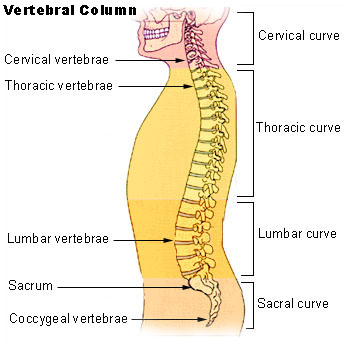Alignment is More than Just Good Posture
Remember when you were growing up and your mom (or your annoying
aunt) would always correct you about your posture? “Stand up straight.”
“Don’t slouch.” “Shoulders back.” Well, it was right… sort of. Body
alignment is important. It affects many aspects of your health. But
proper body alignment is more than just good posture.
Proper body alignment can help with body mechanics.
That means it helps your body moves in a way that’s smart, efficient and
with less risk of injury. In other words, body alignment will keep your
body moving, sitting, standing, working, exercising, and being active
for a long time. Proper alignment is very important, not only for your back, but for your overall health as well.

Proper body alignment helps the major systems in
your body work better: digestive system, respiratory system, nervous
system, immune system and more. In other words, everything runs better
when the body is aligned.
Body alignment is important when exercising.
Body alignment prevents injuries and balances how your muscle groups
work. Also, when you are in alignment, you use less energy for any
movement and put less stress on the joints. When movements are done from
poor alignment position, there is greater wear and tear on joints and
greater is the risk of injury.
Work on posture. Train yourself to recognize Neutral Spine Position—it’s
when the pelvis, rib cage and skull are aligned on top of each other.
Instead of thinking of “standing up straight with your shoulders back”
imagine being suspended from a string from the top of your head and all
the other parts of the spine are suspended from the same string. When in
neutral spine position, all 3 curves of the spine (cervical, thoracic
and lumbar) are aligned and in natural balance. When you’re in this
position, every movement activates from the core muscles.
You can find neutral spine position by practicing a basic relaxation exercise from the floor. You will eventually be able to recognize it while standing, sitting, reclining or moving.
Maintain a healthy weight. Excess weight puts additional stress on the joints and muscles.
Avoid certain body positions and movements. Having a
slumped forward head posture, twisting from the spine to a point of
strain, reaching for anything too far out from the body, bending from
the waist to lift things or reach for things.
Exercise regularly with a program that promotes and builds core stabilization.
- Squats, planks, push-ups, lunges can help strengthen your core. These should be done slowly and with attention to proper alignment. You may want to work with an exercise coach if you are not familiar with proper alignment and are new to an exercise program. Be sure to get approval from your doctor before starting any new exercise or stretching program.
- Practice yoga which helps stretch the muscles, but also strengthens the core (and all major muscle groups). Most yoga classes are available for a wide range of fitness levels. Choose one that is appropriate for you.
- Consider taking up Tai Chi, which emphasizes breathing and slow, balanced movements.
- Try a class in Pilates, which also helps with body alignment and core strengthening. It was developed by Joseph Pilates, who overcame a sickly childhood and later did physical training with WWI soldiers who were recovering from injury.
Remember, all of these exercises can help with body alignment and
strengthening your core. But not all exercises are good for everyone.
People who have had spinal fusion or a slipped disk should be especially
careful with any exercises and confer with their doctor.












.jpg)